

Cover Story
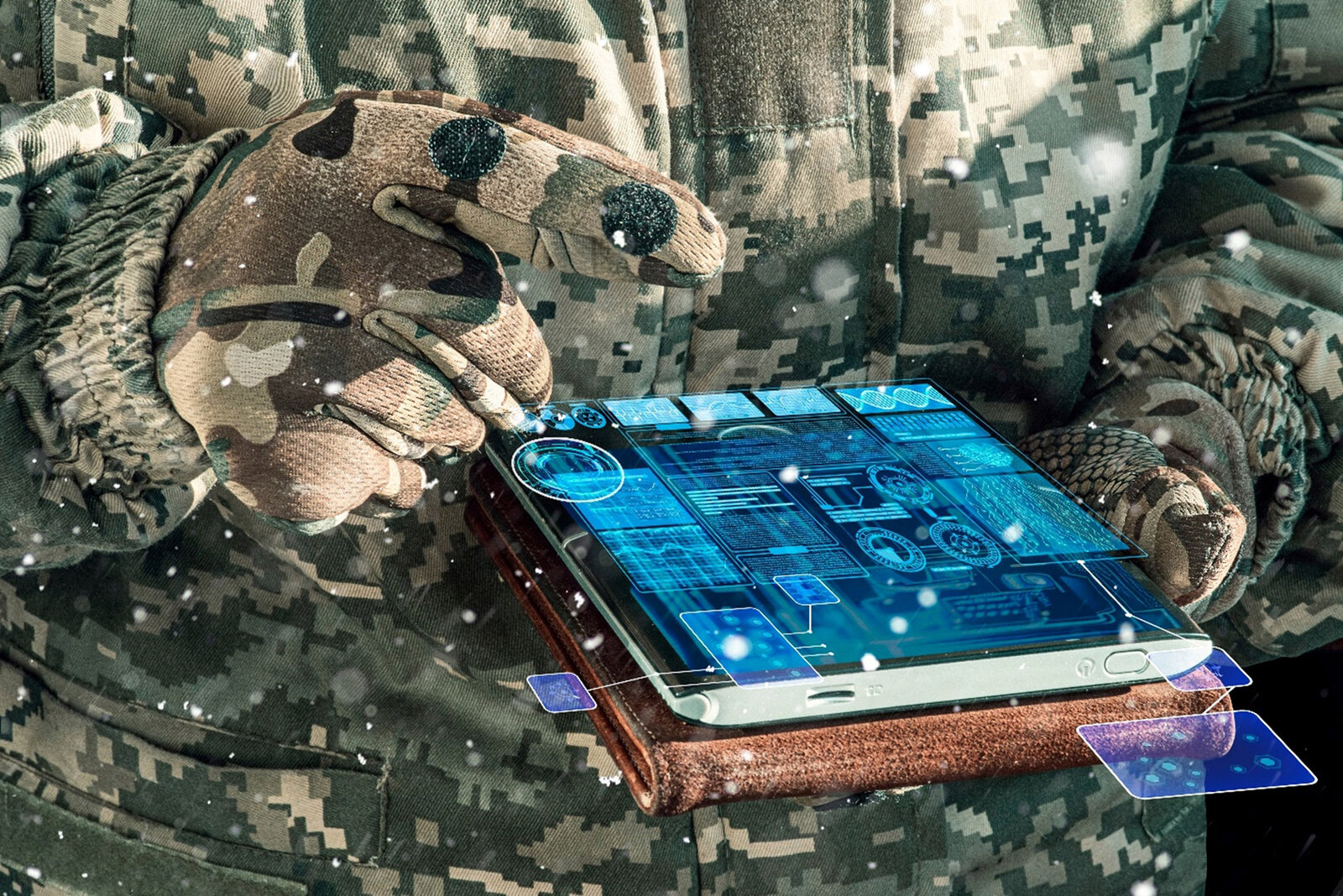
Commander uses AI on tablet computer with augmented reality. Credit: Shutterstock/TSViPhoto
Like much of the rest of the democratic world this year, the UK is heading toward a general election. With that in sight, the government will be pressured to offer more palatable headlines, instead of hailing a new “golden age of shipbuilding” while simultaneously cutting the Royal Navy’s overall ship count. Some might say that great platforms make Great Britain.
But with all the glitz and glamour of big planes, ships and armoured vehicles, investment in personnel and soldier systems may prove to be an area for sensible reflection as their role is evolving as they face more threats in the field.
The critical role of the soldier can be witnessed in Ukraine, where the world is tilting back toward what can be call a conventional, or peer and near-peer conflict. In this old, yet familiar context Ukrainian soldiers are learning lessons about high intensity warfare from which Western armies have grown so distant after two decades of counter-insurgency operations in Afghanistan and Iraq.
It is right for the Western coalition to extract what lessons they can from Ukraine when it comes to the new methods of war, but it is also vital that they learn what Ukrainian soldiers need on the organic level.
There are three aspects that repeatedly crop up when it comes to soldier performance: training, leveraging data, and operating faster.
At the heart of this juggling act that the modern soldier must now perform lies the growing use of autonomy. Ultimately, artificial intelligence (AI) and machine learning will ease the cognitive burden of personnel.
The digitisation of the modern battlefield has led to a heightened risk of ‘information overload’, whereby the decision-making of individual soldiers is hampered by the amount of data they are required to assimilate, interpret and respond to.
While you’re trying to be a jack of all trades, you become less effective at handling all of these things. Meanwhile the computer will sift through the data, process it and provide you with the immediate, simplest and actionable things as opposed to being bombarded with many things that are needed to track on a screen.
“If you can’t understand it, or if you can’t handle all these things as easily, then they’re not going to be as effective as if you handle less of them,” said Tristan Sauer, GlobalData defence analyst. “So, automation is a design characteristic, which can be applied to almost all of the value chains of the soldier systems.”
Various existing and future technologies are being adapted or developed to facilitate the integration of AI capabilities such as software defined radio, weapon optics, and uncrewed systems.
We are asking soldiers now to do more than they ever have before
GlobalData defence analyst Tristan Sauer
The implementation of this technology also provides opportunities for novel tactics and operations concepts to be employed, with streamlined C4ISR capabilities and manned-unmanned teaming enhancing the lethality, agility, situational awareness, and survivability of infantry units on the modern battlefield.
When Russian forces began their full-scale invasion of Ukraine in 2022 the troops were initially prepared with several days’ worth of rations. More than two years on the Russo-Ukrainian war continues as both sides try to take the initiative over the other in an enduring stalemate.
“When everyone has all the equipment – both the Ukrainians and the Russians have jets, air defence, armoured vehicles – what really makes the deciding factor is the quality of the people, the actual human soldier,” Sauer argued.
This comes down to Western training principles in which responsibility trickles down to the lower levels of infantry. This, Sauer says, is where “the divide comes between the quality of the Russian and Ukrainian forces.”
What used to be the remit of the Commander was to control all the drones for all these people. We now realise that is no longer tenable. When you take out that commander, you take out that drone and a hundred people do not have coverage. So, the idea is that every small squad needs to have its own batteries; it is important to promote self-sufficiency.

Ukrainian military woman with the Ukrainian flag in her hands on the background of an exploded house. Credit: Shutterstock/Alim Yakubov
The benefits of devolving capabilities to the lower echelons will only come about if alongside that there is a procedural change, or psychological change, in how you approach responsibility.
It is not just responsibility; it is also about treating the soldier as an asset too. Value on human lives prompts a greater strategic outlook. Conversely, the Russian war machine has derived its personnel from every level of society, sending them straight to the frontlines, from conscripted civilians to famously cutting deals with convicts.
“We are asking soldiers now to do more than they ever have before. They all need to be smarter and more complex, more technologically savvy, and fit. There’s just so much extra pressure on the modern soldier,” Sauer explained.
Sufficient training is an essential prerequisite that is already providing a military edge to Ukraine’s forces.
On 3 June 2024, the Institute for the Study of War posted an update noting that Ukrainian commanders are compensating for training difficulties that mobilisation has exacerbated by training newly deployed personnel on the frontline.
Their decision to do this before committing them to combat indicates that “the overall quality of Ukrainian forces will likely remain higher than that of the Russian forces in the near-to mid-term.”
Sauer added: “So because of that every soldier needs to be more educated. Every soldier requires more hours of training, more support.”
With the emergence of new technologies, we can now begin to leverage data as efficiently as possible, even at a more minute level.
Sauer identified one futuristic area of focus called ‘biomonitoring’, whereby smart textiles are used to make personal protective equipment. These wearables provide a commander with real-time physical data for each individual soldier at the tactical level. All of this information is then fed into the wider control network.
“So instead of a thread just being a thread of wool, it’s a thread of wool that can also transfer data.”
If you can’t understand it, or if you can’t handle all these things as easily, then they’re not going to be as effective as if you handle less of them
GlobalData Defence Analyst Tristan Sauer
The US Army has been developing ‘Protein Catalysed Capture’ based receptors since around 2019. It is hoped that this technology could be integrated with a range of ‘smart’ equipment including eye-movement monitors, flexible displays/batteries, smart keychains, tissue-integrated biosensors (i.e. smart tattoos) and conventional wearables (i.e. smart watches).
“While there’s none of this in Ukraine, the point is Ukraine has shown that there is a big need for identifying battlefield trauma, particularly during high intensity warfare. There are more things that can kill you in different ways in Ukraine than there were in Iraq or Afghanistan, where there were IEDs, bullets and things," Sauer said.
Furthermore, data can be leveraged within a network, and this has been particular area of focus within industry in recent years.
Speaking with Global Defence Technology, John Dix, a Thales land communications representative and former solider, explained that “the sharing of information at the tactical edge is absolutely key, and that’s absolutely what the user is asking for, it’s what they need.”
Dix pointed to Thales’ SquadNet and Javelin mobile ad hoc network (MANET) radios as examples of British innovation in soldier systems. These systems provide a data network suitable for voice, data, and video traffic.
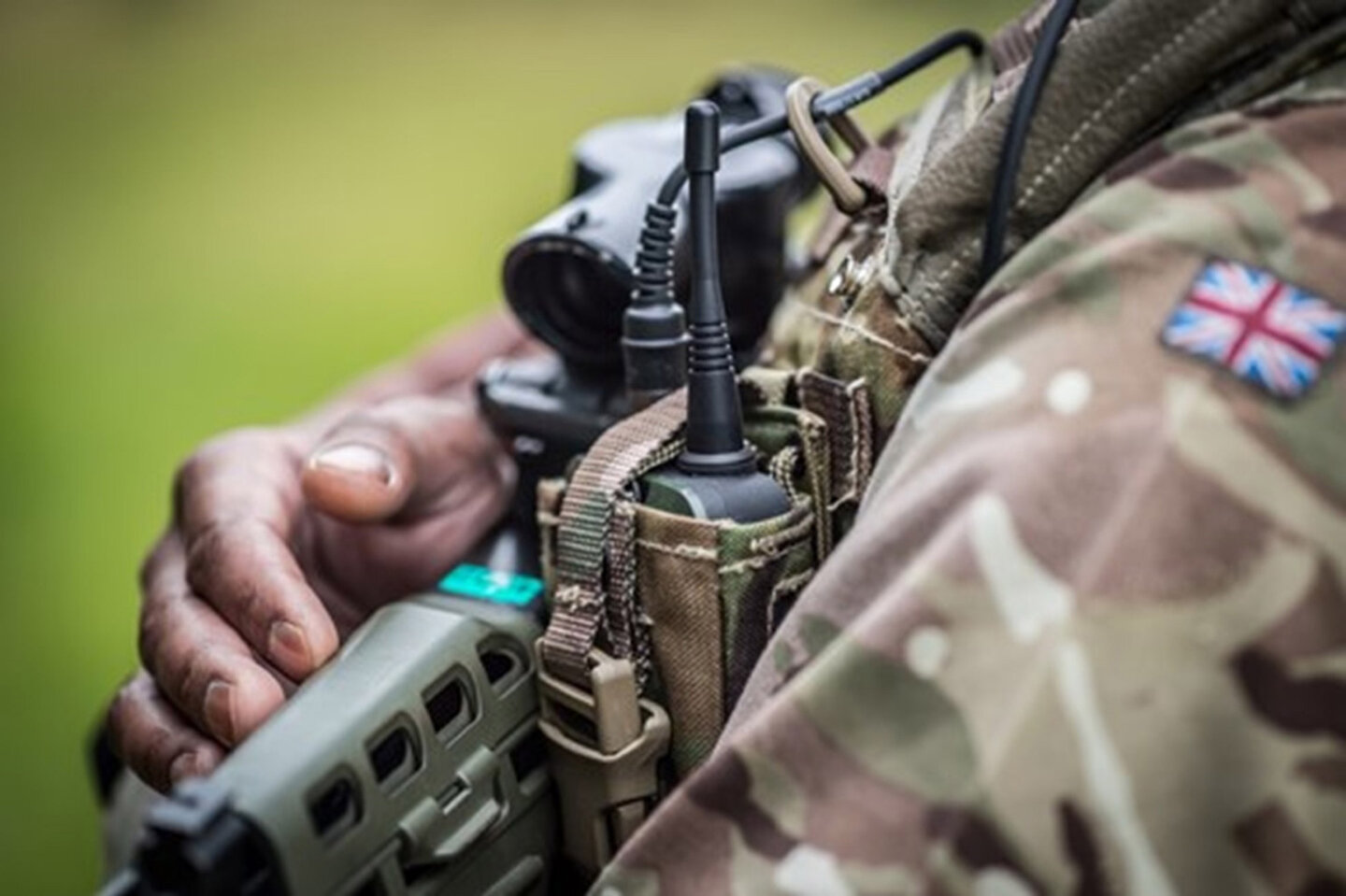
Image of British Army soldier using SquadNet radio communications system. Credit: Thales
“SquadNet, and also the Javelin radio, they’re both MANET radios that provide that interoperability, that sort of sharing of data, sharing of network information. So that is something that Thales are working on as a whole.”
SquadNet has enough range to work either within a tiered network structure or in a flat network configuration. For example, a full flat company network was demonstrated using 120 radios over 20km2 on the Salisbury Plain Training Area – and SquadNet’s network can be larger.
“You may be able to co-ordinate radio data in that tactical bubble for instance, but also it allows you to sort of back all that information further to a company level or even a battle group level,” suggested Dix.
“We are developing and building things with interoperability in mind. That goes hand in hand with other nations, for instance, so that is a key consideration as we go forward is we’re not just this insular, siloed organisation.”
$345m: Lynas Rare Earth's planned investment into Mount Weld.
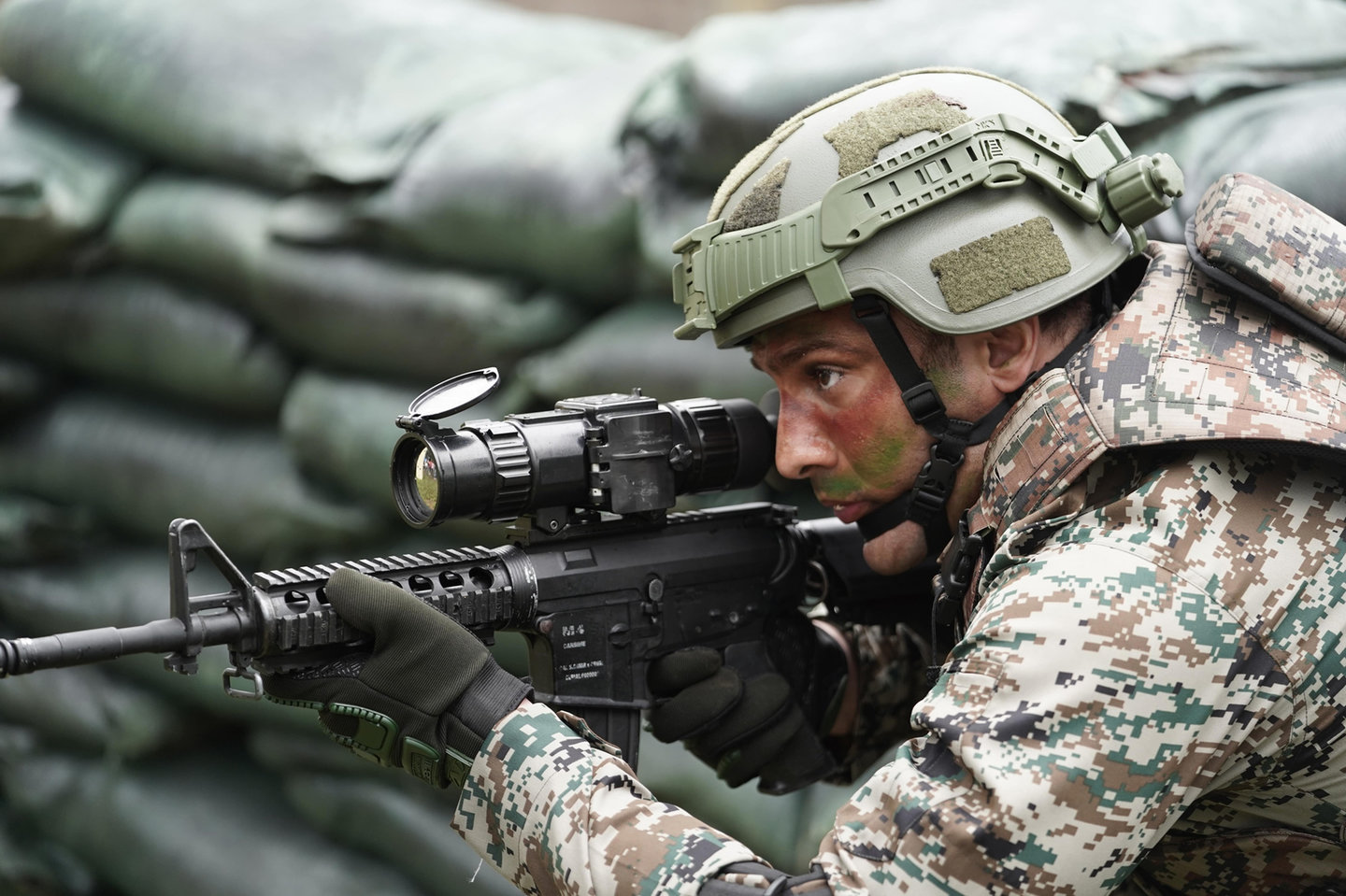
Caption: The US Pentagon is seeking to reduce carbon emissions through a range of programmes, but will it go far enough? Credit: US DoD
Australia could be one of the main beneficiaries of this dramatic increase in demand, where private companies and local governments alike are eager to expand the country’s nascent rare earths production. In 2021, Australia produced the fourth-most rare earths in the world. It’s total annual production of 19,958 tonnes remains significantly less than the mammoth 152,407 tonnes produced by China, but a dramatic improvement over the 1,995 tonnes produced domestically in 2011.
The dominance of China in the rare earths space has also encouraged other countries, notably the US, to look further afield for rare earth deposits to diversify their supply of the increasingly vital minerals. With the US eager to ringfence rare earth production within its allies as part of the Inflation Reduction Act, including potentially allowing the Department of Defense to invest in Australian rare earths, there could be an unexpected windfall for Australian rare earths producers.
Total annual production
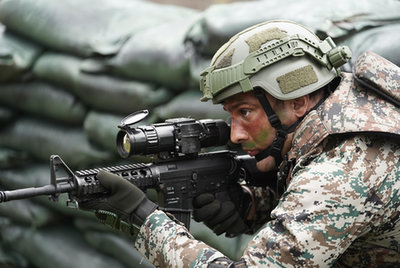

Phillip Day. Credit: Scotgold Resources
Feature
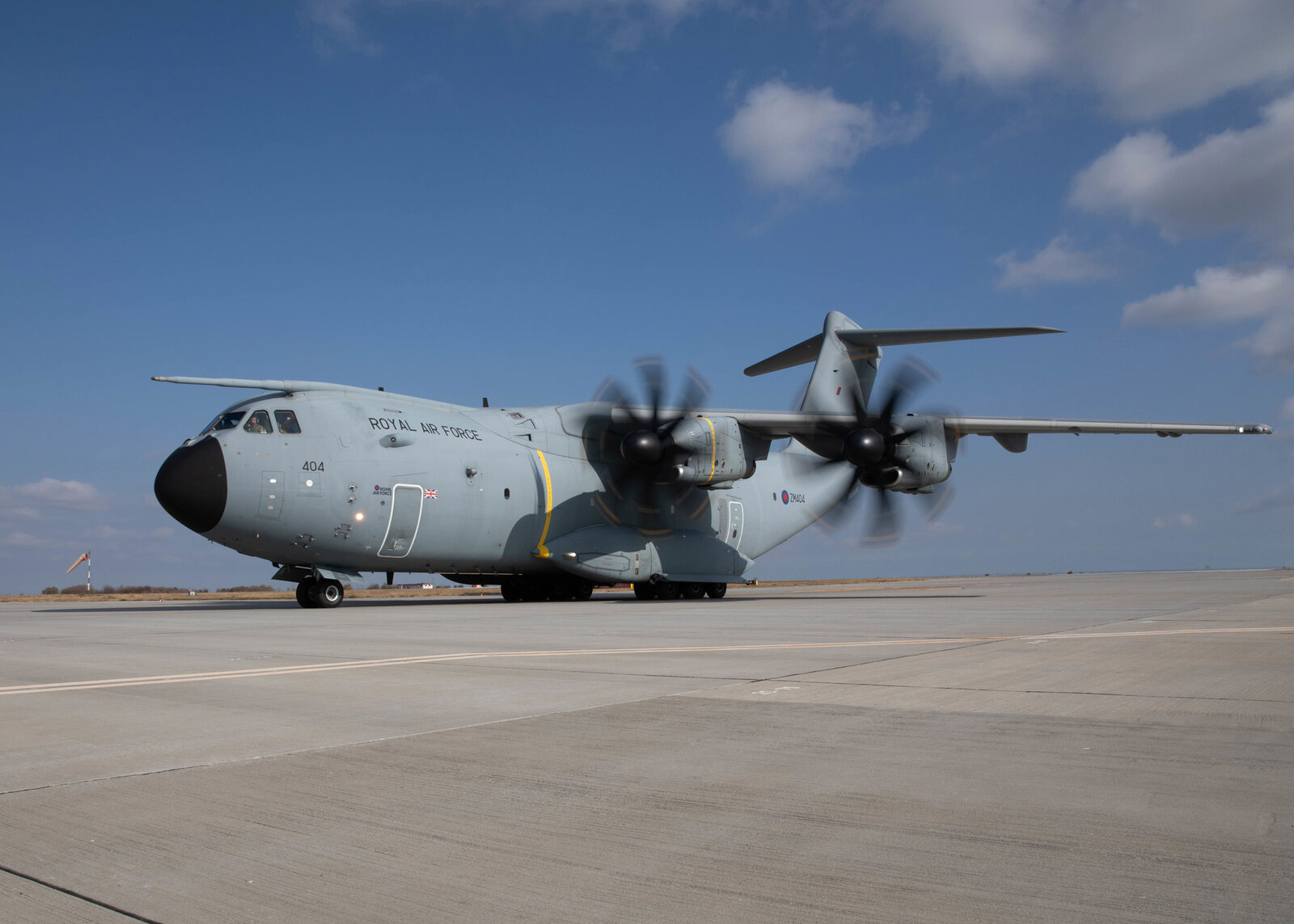
A number of countries in Europe operate the A400M transporter, including the continent’s three major military powers. Credit: US Army
International options for tactical and strategic transport aircraft are somewhat limited, but Europe has traditionally preferred home-grown and North American solutions. However, that is beginning to change as Embraer of Brazil starts to prise market share on the continent.
Airbus and Leonardo offer European-built solutions. The former offers the C295 medium airlifter that can carry 9,250kg payloads, with more than 180 of 258 on order globally having been delivered to date. In Europe the C295 is flown by the Czech Republic, Finland, Ireland, Poland, Portugal, Serbia, and Spain. Last December, Spain ordered 16 C295 maritime patrol aircraft variants for €1.695bn ($1.84bn).
However, Airbus’ ultimate airlifter is the A400M. European customers Belgium, France, Germany, Spain, Turkey, and the UK have ordered 170 A400Ms between them, of which more than 120 have been delivered.
Asked about the A400M’s key features, an Airbus spokesperson highlighted to Global Defence Technology the aircraft’s versatility. “It can do the work of three aircraft: it can be used as a transporter, tanker, and medevac aircraft. What’s more, the A400M can take off and land almost anywhere, even on small and unprepared airstrips.”
With a 37-tonne payload capacity, it can carry outsized loads as large as Chinook helicopters, or heavy vehicles and equipment for humanitarian missions, at better ranges, speeds, and altitudes than legacy airlifters.
The A400M continues to evolve, such as contributing to the Future Combat Air System. In a December 2022 test, an A400M deployed and controlled unmanned aerial vehicles. Additionally, Airbus is developing a new roll-on/roll-off firefighting prototype kit; its most recent test campaign occurred in December 2023.
Airbus provides full maintenance, repair, and overhaul (MRO) services from its main MRO base in Manching near Munich, as well as Wunstorf Air Base and Hannover Airport. Furthermore, Airbus is constructing a new A400M maintenance facility close to Wunstorf. Due to commence operations in 2027, it will perform MRO and also host the Airbus A400M Support Centre with a workforce of approximately 300. Furthermore, six A400M training centres possess full flight simulators.
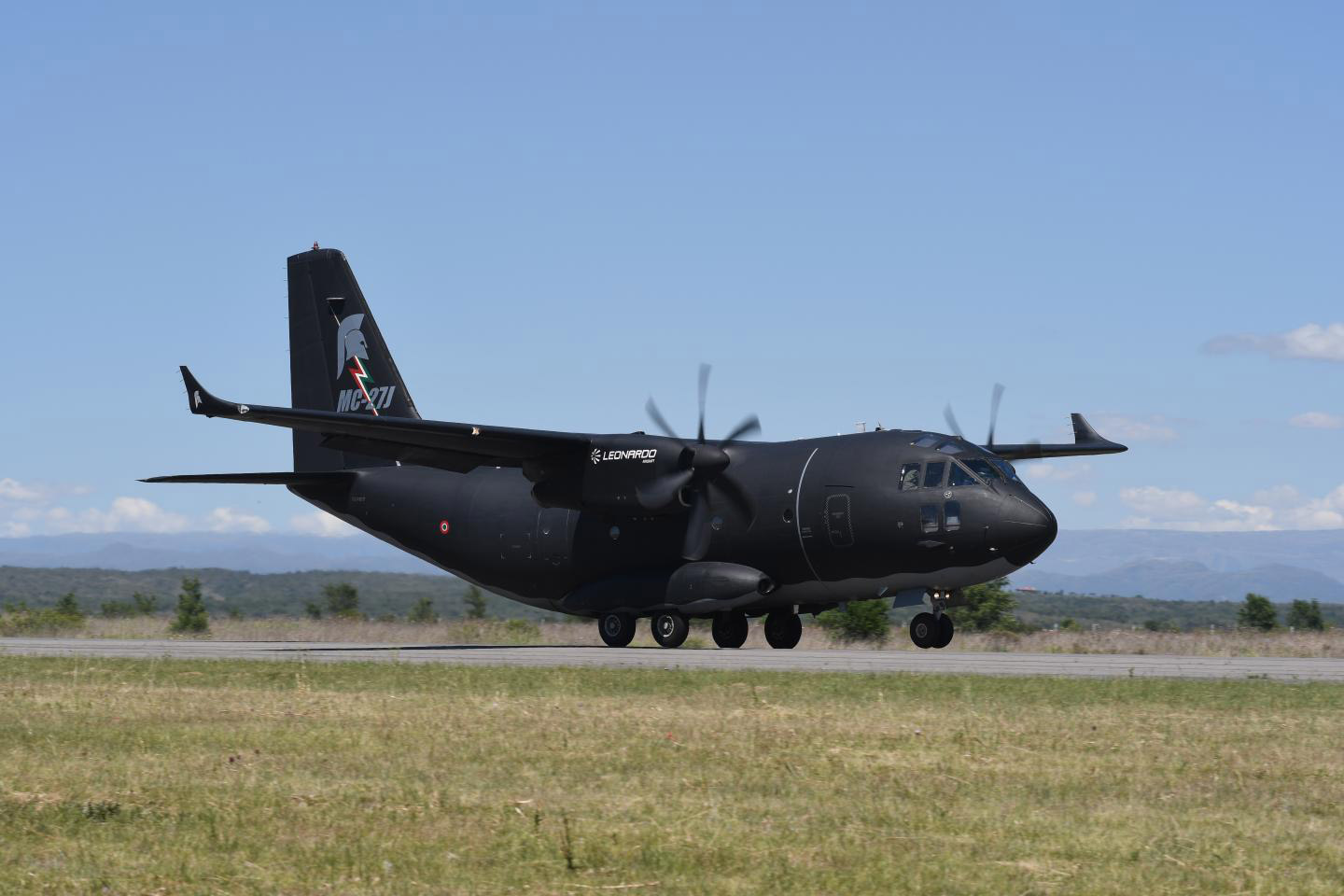
The C-27J Spartan from Leonardo is available in different versions, including the multi-mission MC-27J that is pictured here. Credit: Leonard
The company spokesperson said they “expect the A400M to keep playing a key role for several decades. First deliveries happened in 2013, and we foresee the A400M to remain a key asset until the 2050s. What will come later will depend on the evolution of both technologies (civil and military) and customer needs.”
However, Airbus is ready to build upon current platforms with the Future Midsize Tactical Cargo (FMTC) programme. “Airbus has been conducting internal studies for years to mature the idea of the tactical transport aircraft of the future, focused on 20 tonnes of payload. We believe a new-generation tactical transport aircraft in this category would be well received in both the European and international markets, which is why Airbus has launched initial activities for the FMTC programme.”
As part of the FMTC’s first stage, Airbus is coordinating the Future Air System for European Tactical Transportation (FASETT), a European Commission-funded collaborative defence research and development project. The company noted: “This feasibility study has an 18-month duration, with a cost of €30 million and more than 30 European companies involved. The objective of this phase is to carry out a concept-of-operation study of the aircraft, identifying and responding to tactical and operational needs of EU member states in the 2030-40 horizon, while analysing our customers’ transport aircraft replacement needs...”
Airbus added: “We believe this initiative will have a double positive effect of great magnitude: on the one hand we’ll reinforce the fleets of EU countries with a 100%-European state-of-the-art platform, and on the other hand it will allow us to develop and position European industry in state-of-the-art current technology.”
Elsewhere, France, Nato, Spain, and the UK operate Airbus’ A330 Multirole Tanker Transport (MRTT). The spokesperson said: “In a world that’s more and more global and connected, strategic transport is a very important role for any advanced air force. The A330 MRTT, as a multirole aircraft, can be tasked at any moment, without the need of any reconfiguration, to perform high-capacity transport missions for passengers (up to 300 in a single-class cabin) and/or palletised cargo (up to 37 tonnes in the lower cargo decks), covering very long distances in an effective and efficient manner.”
An example of the MRTT’s utility was France sending reinforcements to New Caledonia in the wake of civil unrest in May 2024.
The C-27J Spartan, Leonardo’s twin turboprop with 11.5-tonne cargo capacity, is operated in Europe by Bulgaria, Greece, Italy, Lithuania, Romania, Slovakia, and Slovenia. In 2020, Leonardo launched the C-27J Spartan Next Generation, whose key modifications included new avionics, performance-based navigation, and winglets. Maritime patrol/anti-submarine warfare, electronic warfare and search-and-rescue variants are available
Both the UK and Nato operate Boeing’s C-17A Globemaster III, but production of this large transporter has ceased. Instead, Nato’s tactical-transport backbone is undoubtedly Lockheed Martin’s C-130. Used by ten European nations, they own 22% of the entire C-130 global fleet, with Denmark, France, Germany, Italy, and Norway flying the latest C-130J/C-130J-30 version.
Norway has received one of four C-130J-30s, while Germany received its final aircraft in April. Interestingly, Germany’s three C-130J-30s and three KC-130Js operate alongside France’s two C-130J-30s and two KC-130Js. This Franco-German unit represents the first binational C-130 fleet.
Speaking with Global Defence Technology, Nicholas Smythe, director of International Campaigns, Air Mobility & Maritime Missions at Lockheed Martin Aeronautics, said: “European operators demonstrate time and time again the importance of the C-130 in the critical ‘last mile’ into an operational theatre.”
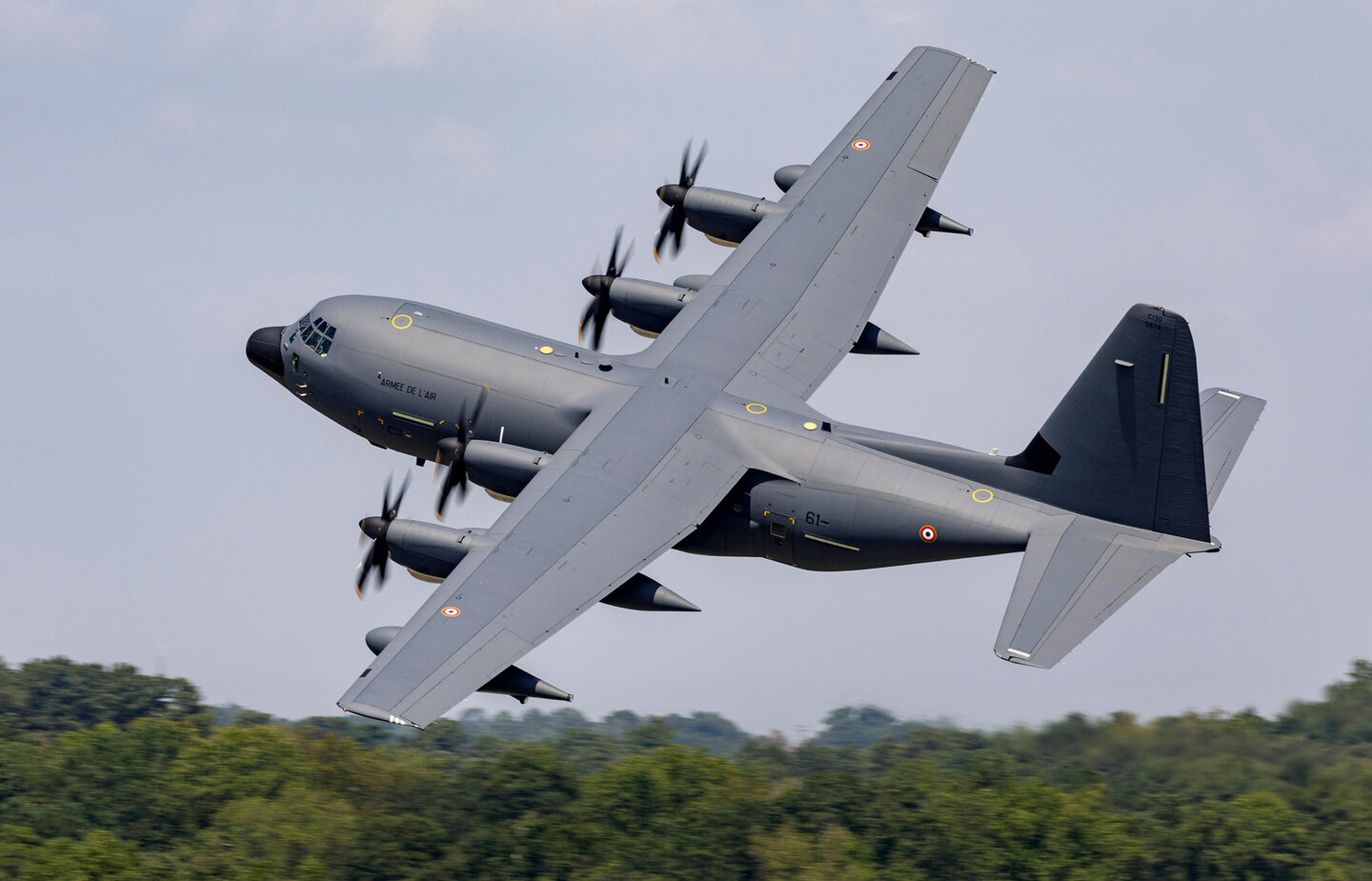
This Lockheed Martin KC-130J, a refuelling tanker variant of the popular Super Hercules, belongs to the French Air Force. Credit: Lockheed Martin
Lockheed Martin is promoting the Super Hercules to new Nato member Sweden, while Greece is another potential customer. The Super Hercules, which carries 21,183kg of cargo, has been chosen by 22 nations, with more than 540 aircraft delivered and three million flight hours clocked up.
Asked about the Super Hercules’ credentials, Smythe highlighted its tactical nature (including an ability to fly at low altitudes and slow speeds); global interoperability; flying capabilities (short-field take-off/landing performance, and lower fuel consumption); value (thanks to a stable production line, global supply chain, joint user groups and worldwide support system); continued innovation (e.g. connectivity, block upgrade programme and incremental power plant improvements); and proven performance.
European operators demonstrate time and time again the importance of the C-130 in the critical ‘last mile’ into an operational theatre.
Nicholas Smythe, Lockheed Martin Aeronautics
The Super Hercules will soon receive an aerial spraying capability, whilst the US Air Force is exploring the feasibility of airdropping palletised effects too. Block 8.1 software and hardware upgrades are installed on newly delivered aircraft, which include a new flight management system, civil GPS, updated identification friend or foe, enhanced intercom and better approach/landing systems.
Smythe addressed the C-130’s future too: “…The Super Herc’s place in the future battlespace is being planned today. JADC2 [Joint All Domain Command and Control] node capability, 5G.Mil connectivity, enhanced communications systems and open mission architecture are some of the technologies that support the C-130J’s continued evolution. With strong demand for the C-130J and multiple advancements in work for the Super Herc, we are focused on meeting our operator’s current and future tactical airlift requirements.”
With so many C-130s in service, there is a large market for MRO and upgrades in Europe. Lockheed Martin has certified 16 service centres globally, including four in Europe: Marshall Aerospace and Vector Aerospace in the UK, Sabena Aerospace in France, and Leonardo in Italy. Hercules wheeling and dealing goes on in the second-hand market too. For example, in March 2023 the Royal Air Force took the unusual step of divesting its single C-130J and 13 C-130J-30 aircraft, and these are now available to foreign buyers.
With its C-390 Millennium that has a 26-tonne cargo capacity, Brazilian firm Embraer is carving out a niche in the European market. It has been selected by Austria and the Czech Republic, and logged sales to Hungary (x2), the Netherlands (x5) and Portugal (x5).
Jonatas Torresan, Embraer’s corporate communications officer, said the above list reflect the C-390’s “growing international appeal and acknowledgment of its superior capabilities, reliability and performance”. The first European C-390 entered Portuguese service in October 2023, while another will soon reach Hungarian hands.
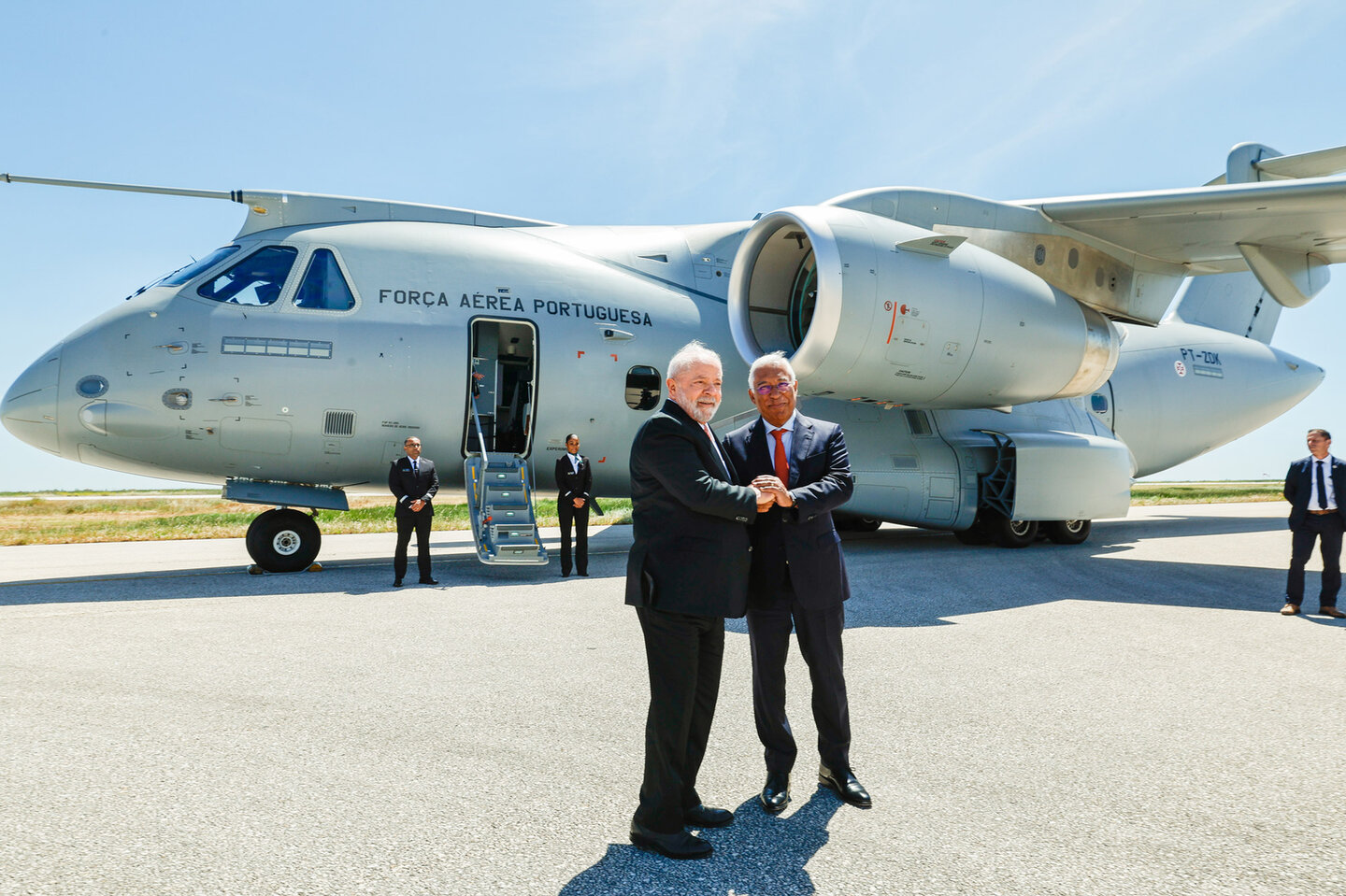
The first Embraer C-390 Millennium transport aircraft is seen here being handed over to a European customer, the Portuguese Air Force. Credit: OGMA
Asked about the aircraft’s capabilities, Torresan said it features “the latest advancements in tactical radar, self-protection mechanisms, avionics, vision enhancement, as well as advanced cargo handling and airdrop technologies. Its versatile ‘one aircraft, many capabilities’ design philosophy enables rapid reconfiguration for an extensive variety of operations, encompassing aerial resupply, air assault, air-to-air refuelling (with the KC-390 variant), aerial firefighting, search and rescue, humanitarian aid, medical evacuation and special operations support.”
Additionally, a detachable electro-optical/infrared pod broadens its operational scope for maritime patrol, special operations and search and rescue.
Torresan added: “Embraer offers full support to all our countries, including training, maintenance, parts and engineering services with offices, warehouses and teams located all across Europe.” OGMA in Portugal is Europe’s first C-390 authorised service centre.
With Moscow embroiled in the Ukraine war, Russian-built aircraft are anathema to most of Europe. However, two Asian-built transport aircraft also exist – the Japanese C-2 and Chinese Y-20 – although neither has achieved sales outside their domestic markets. Furthermore, the Y-20’s European appeal will be limited because of political reasons. Korea Aerospace Industries is currently designing the 30-tonne-class MC-X Orca, but production is at least eleven years from commencing.
This all means that American, Brazilian, and European tactical and strategic airlifters will potentially continue to dominate Europe’s regional sales for the foreseeable future.
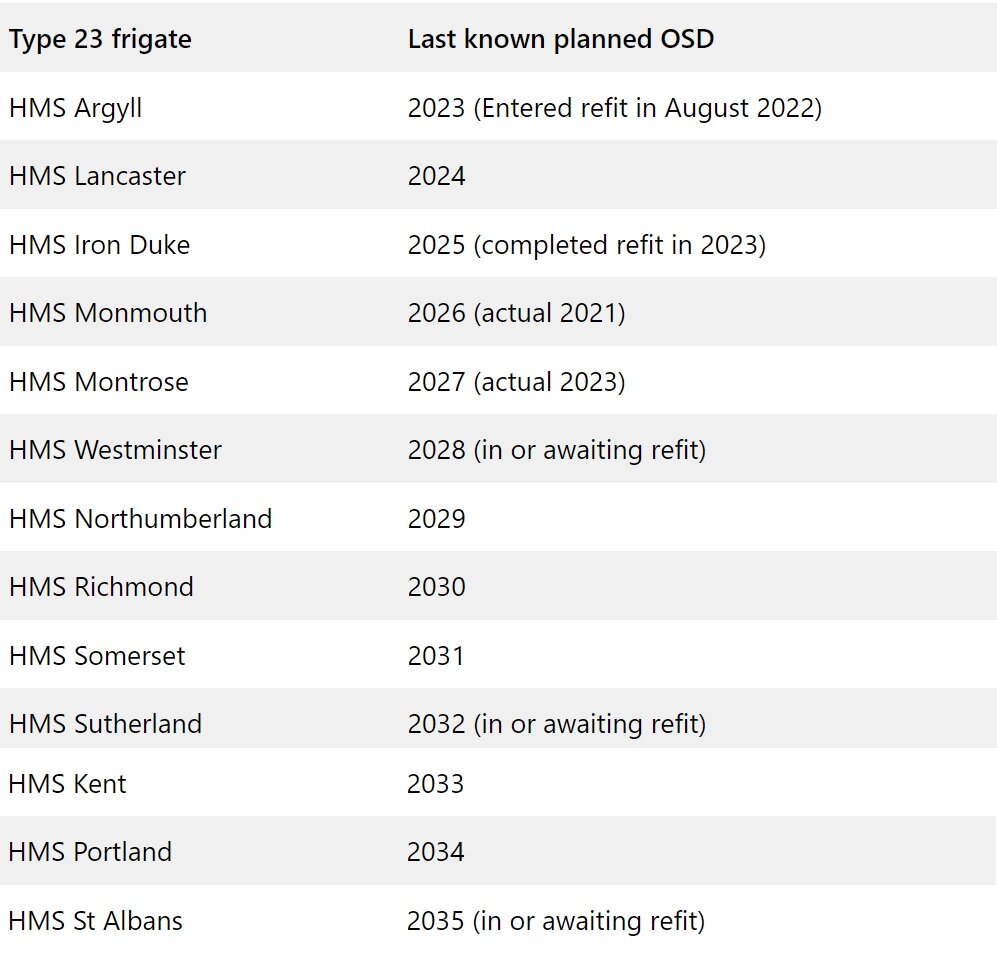

Caption: The Combined Force Space Component Command Operations Directorate team stands at the first “Rapid Tiger” advanced training event from 28-31 March, 2022. Credit: US Space Force/Lt. Col. Mae-Li Allison
So, these kinds of decisions, which human beings had to do - and human beings, of course, are very intuitive - that intuition also gets embedded with AI machine learning.
Dr Rajeev Gopal, vice president for Advanced Programmes at Hughes.
Australia could be one of the main beneficiaries of this dramatic increase in demand, where private companies and local governments alike are eager to expand the country’s nascent rare earths production. In 2021, Australia produced the fourth-most rare earths in the world. It’s total annual production of 19,958 tonnes remains significantly less than the mammoth 152,407 tonnes produced by China, but a dramatic improvement over the 1,995 tonnes produced domestically in 2011.
The dominance of China in the rare earths space has also encouraged other countries, notably the US, to look further afield for rare earth deposits to diversify their supply of the increasingly vital minerals. With the US eager to ringfence rare earth production within its allies as part of the Inflation Reduction Act, including potentially allowing the Department of Defense to invest in Australian rare earths, there could be an unexpected windfall for Australian rare earths producers.
Total annual production

$345m: Lynas Rare Earth's planned investment into Mount Weld.
Phillip Day. Credit: Scotgold Resources